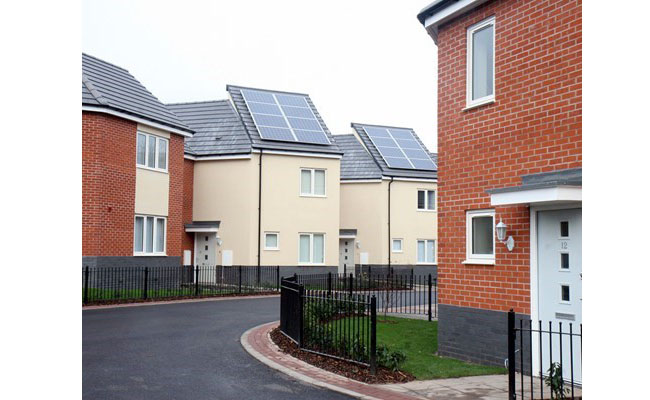Nearly 17,000 homes were built in the West Midlands last year, meaning the number of homes constructed in the region has more than doubled in the last eight years.
A total of 16,938 properties were built in 2018/19 – a 15% rise on the previous year and twice the UK average increase – latest figures from the Ministry of Housing, Communities and Local Government (MHCLG) have shown.
That compares to just 7,500 homes built in 2011.
The numbers are a major boost for the West Midlands Combined Authority (WMCA) area which needs to build 215,000 new homes by 2031 to keep pace with a growing economy and population.
The latest figures come as the WMCA continues to use hundreds of millions of pounds to unlock more land for housing and lay down minimum standards of affordability, design and energy efficiency.
The authority, which was set up in 2016 in exchange for greater powers and funding from central Government, has also introduced a ‘brownfield first’ policy where schemes are built on derelict industrial land wherever possible, helping to relieve pressure on the green belt.
Gareth Bradford, WMCA director of housing and regeneration, said the West Midlands economy was growing faster than any other region outside London but this growth, and the thousands of new jobs being created, was driving ever higher demand for housing.
“These figures are great news for our region and show how the West Midlands is leading a house building revolution in the UK,” he said.
“We are turning derelict land into vibrant new communities and developing new modern, construction methods so we can build more homes at pace. At the same time we are training local people in the skills needed to build these new homes.
“Ultimately we want to make sure everyone has the opportunity of a decent home and a worthwhile job but making sure we have enough homes in the future is a major challenge and there is still much to do.
“The good news is that since 2011 we have doubled the number of homes being built each year and these latest figures show how we have already hit the average annual rate we needed to hit in 2031.
“So this collective effort by the region, which has seen councils, local enterprise partnerships and others working together through the WMCA housing and land delivery board, has radically closed the gap between what we planned to deliver and what has actually been delivered while all the time retaining a focus on brownfield land.
“This underpins the commitment we gave to Government in our Housing Deal last year so it’s great to see the region turning ambition into a reality that people can see and touch.”
Recent examples of the WMCA’s ‘brownfield first’ policy include:
- Friar Park in Wednesbury, where the WMCA is spending several million pounds to buy and clean up a former sewage works, paving the way for a 750 home community
- Saints Quarter, Steelhouse Lane, Wolverhampton, where a £770,000 WMCA grant has enabled 151 homes to be built on former industrial land by developer Lovell Midlands
- Gosgote Lane, Walsall, where the WMCA provided £3.6 million funding for the clean-up of 17 hectares of brownfield land ready for 263 new houses
The latest MHCLG figures show that in the metropolitan area Coventry saw the biggest increase – nearly 37% – followed by Birmingham with a 32% uplift. In the wider WMCA area Tamworth recorded a 109% increase.
Meanwhile, work by the WMCA to drive forward new developments has been accelerating in recent weeks.
Only this month (November) the WMCA allocated a further £30 million to buy or clean up another seven brownfield sites and get them ready for new housing or commercial developments.
These schemes alone will see a further 800 new homes built and around 200 of these will be affordable.
This is a direct result of the WMCA’s policy of ensuring that a minimum of 20% of homes in a development it helps funds are classed affordable.
